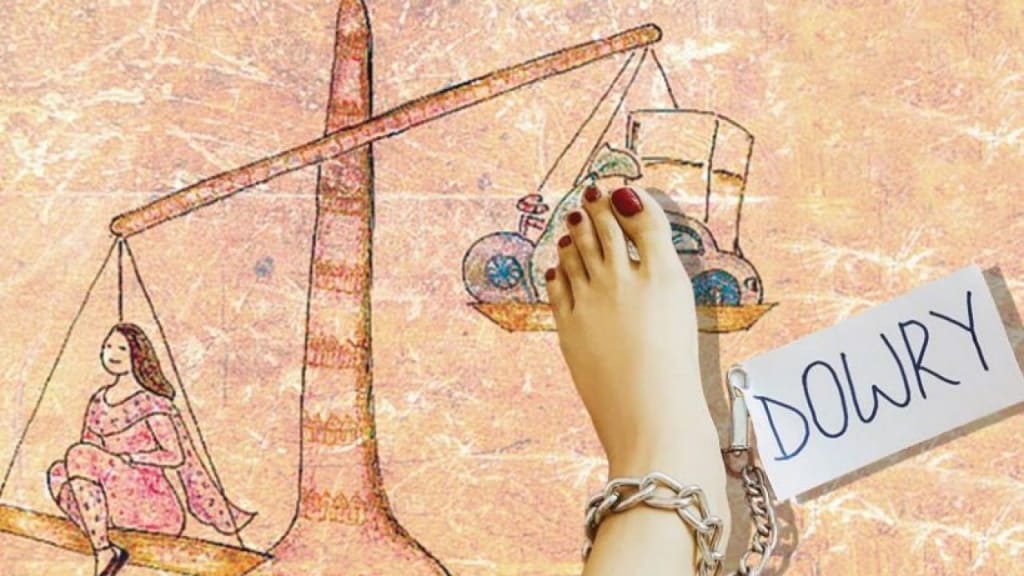Dit Daat: The Symbolic Exchange of Dowry in Punjabi Society
Rituals and Traditions of Marriage in Punjab

Dit Daat, or dowry, is a cultural practice deeply rooted in Punjabi society and many other parts of South Asia. It encompasses the symbolic exchange of gifts, money, or property from the bride's family to the groom's family during marriage. With centuries-old traditions, dowry holds both economic and social significance, although it has been subject to criticism and calls for reform due to its potential negative consequences.
Symbolically, Dit Daat represents a complex interplay of familial love, social obligation, and the transition of a daughter from her natal family to her marital home. It serves as a way for the bride's family to express their affection, respect, and support for their daughter as she embarks on a new phase of life. By providing a dowry, the bride's family aims to enhance her status within the groom's family and ensure her well-being and comfort in her new household.
The dowry exchange typically comprises various items, including household goods, jewelry, clothing, furniture, and sometimes even cash. The specific items and their value vary depending on factors such as the families' social status, economic capabilities, and cultural traditions. In some cases, dowries can be substantial and lavish, putting significant financial strain on the bride's family.
While dowry is deeply ingrained in Punjabi society, it has faced criticism for perpetuating gender inequalities and reinforcing patriarchal norms. The practice often places a burden on the bride's family, as they are expected to provide a substantial dowry to ensure their daughter's acceptance and happiness in her marital home. This expectation can lead to financial hardships, indebtedness, and even exploitation of the bride's family.
Moreover, dowry practices have been associated with various negative consequences. Dowry demands and disputes can strain inter-familial relationships and lead to marital discord. In extreme cases, the pressure for dowry can escalate to dowry-related violence, harassment, or even dowry-related deaths, commonly known as dowry deaths. Such incidents are a stark reminder of the inequalities and injustices that persist within the dowry system.
In response to these issues, there have been efforts to raise awareness about the negative implications of dowry and promote gender equality in marriage. Women's rights activists and organizations have played a crucial role in advocating for stricter enforcement of laws against dowry demands, as well as empowering women to resist and challenge dowry practices.
In recent times, there has been a noticeable shift in societal attitudes towards dowry in Punjab. Many families are opting for more modest dowries or even rejecting the dowry system altogether. Factors contributing to this change include increased education and awareness, economic independence of women, and a desire for equal partnerships in marriage.
Changing perceptions and attitudes towards dowry are reflected in contemporary Punjabi weddings. Some families have replaced extravagant dowries with practical gifts that support the bride's aspirations and professional goals. Emphasis is placed on mutual respect, love, and the importance of the couple's compatibility rather than material possessions.
It is important to acknowledge that dowry practices cannot be solely attributed to one region or community. They exist across various cultures and societies around the world, albeit under different names and forms. In the case of Punjabi society, while Dit Daat has symbolic significance, it is crucial to approach the subject critically and consider the broader implications of dowry on gender equality, women's rights, and family dynamics.
In conclusion, Dit Daat, the symbolic exchange of dowry in Punjabi society, is deeply ingrained in cultural practices. It represents a symbolic expression of love, respect, and support from the bride's family to the groom's family. However, the practice has been subject to criticism due to its potential negative consequences, including gender inequalities, financial burdens, and instances of violence and exploitation. Efforts are being made to raise awareness, enforce laws, and promote gender equality to address the issues associated with dowry. Changes in societal attitudes are evident, with many families opting for more modest dowries or rejecting the dowry system altogether. Ultimately, it is crucial to continue challenging and reevaluating dowry practices in order to create more equitable and harmonious relationships within Punjabi society and beyond.
About the Creator
Dr. Amjad Ali Bhatti
Dr. Amjad Ali Bhatti is a multifaceted individual who has made significant contributions in the fields of research, translation, literature, and social activism.






Comments
There are no comments for this story
Be the first to respond and start the conversation.